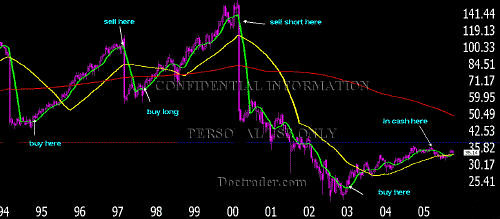Main Points:
- $200 million liquidation exposed the fragility of the crypto market.
- Investor psychology plays a significant role in market dynamics.
- The future of cryptocurrency involves stricter regulations and macroeconomic impacts.
- Key strategies for investors include diversification, staying informed, and maintaining a long-term perspective.
The cryptocurrency market has once again experienced turmoil, with a $200 million liquidation revealing its inherent fragility. This event underscored the volatile and immature nature of the market, leaving investors reeling in its wake. As cryptocurrencies continue to fluctuate, it is essential to understand the underlying factors driving this instability, the psychological mechanisms at play, and what lies ahead for investors.
$200 Million Liquidation Exposes Market Fragility
In early October 2024, a wave of liquidations hit the cryptocurrency market, totaling $200 million in losses. This sudden event triggered panic across the market, causing prices to plummet and revealing the ongoing vulnerability of digital assets.
The liquidation process, in which leveraged positions are forcibly closed due to margin calls, resembles the rapid depletion of sand in an hourglass. Just like a slot machine’s reels that spin unpredictably, investors’ fortunes can vanish in a matter of seconds. This crash serves as a stark reminder of how risky cryptocurrency investments remain, as they are heavily influenced by external factors and often prone to dramatic price swings.
The extreme volatility in the crypto space is compounded by the speculative nature of trading, which continues to dominate the market. Furthermore, the event shed light on how heavily the market depends on margin and leverage trading, increasing the impact of market downturns. The cascading effect of these liquidations can bring about widespread losses, leading to a self-reinforcing cycle of declining prices.

Investor Psychology and Market Mechanisms
Investor behavior is at the heart of this issue. Unlike traditional financial markets, where investment strategies are often more stable and long-term, the cryptocurrency market is heavily driven by speculation and emotion. This leads to overreactions to small price movements, which can spiral into broader market instability.
A significant factor in this volatility is leveraged trading. Leverage allows traders to control large amounts of assets with relatively small capital, amplifying both potential gains and losses. While this can be highly profitable in a rising market, it also magnifies risk during downturns. The recent $200 million liquidation was primarily driven by investors who had over-leveraged their positions, resulting in a rapid sequence of margin calls.
Additionally, the fast-paced nature of cryptocurrency markets, with their 24/7 trading cycle, amplifies emotional responses from investors. The lack of a “cooling-off” period that traditional markets often have can lead to rash decision-making, further destabilizing prices. In these environments, even small shifts in sentiment can have outsized effects.
The Future of Cryptocurrency: What Lies Ahead?
Given these vulnerabilities, what does the future hold for cryptocurrency? One certainty is that regulations will become stricter. Governments around the world are increasingly implementing measures to stabilize the market and protect investors from the types of extreme losses recently witnessed.
Stronger regulatory frameworks will likely lead to greater transparency and reduce the likelihood of market manipulation. However, these regulations may also slow the growth of the market, particularly in regions where governments are wary of the speculative nature of cryptocurrencies. Regulatory crackdowns, especially in major economies, could create temporary disruptions but may ultimately make the market more resilient in the long run.
Macroeconomic factors also play a significant role. Global inflationary pressures, shifts in monetary policy, and changes in economic growth all impact the cryptocurrency market. As digital assets become more intertwined with traditional financial systems, their prices will increasingly reflect broader economic trends.
Strategies for Investors: Navigating a Volatile Market
For investors looking to navigate the tumultuous crypto market, certain strategies can help mitigate risk while still taking advantage of potential gains.
- Diversification: It’s crucial not to concentrate investments solely in cryptocurrencies. By diversifying across different asset classes, investors can reduce the impact of market downturns and spread their risk. Traditional assets like stocks, bonds, or commodities can serve as a buffer during volatile periods in the crypto market.
- Staying Informed: Cryptocurrency investors need to be proactive in staying up to date with market trends and news. Unlike traditional markets, the pace at which the crypto market evolves means that new developments can have immediate and significant impacts on asset prices. By keeping abreast of regulatory changes, economic conditions, and technological advancements, investors can make more informed decisions.
- Long-Term Perspective: Despite its day-to-day volatility, many experts believe in the long-term growth potential of cryptocurrency. Investors who focus on short-term price movements are more likely to fall victim to the kind of emotional trading that fuels market crashes. Those who maintain a long-term outlook, avoiding panic during downturns, are more likely to see positive returns.
The Future of the Cryptocurrency Market
The $200 million liquidation serves as a stark reminder of the crypto market’s inherent fragility. However, it also highlights the need for investors to be more informed, cautious, and strategic in their approach.
As regulations tighten and the macroeconomic environment shifts, the cryptocurrency market is poised to undergo significant changes. While these shifts may present challenges in the short term, they also offer opportunities for growth and innovation.
Investors must carefully assess their risk tolerance, remain informed about market developments, and adopt a long-term perspective to successfully navigate the future of cryptocurrency. Though the path ahead may be rocky, the potential rewards for those who can weather the storm remain significant.


